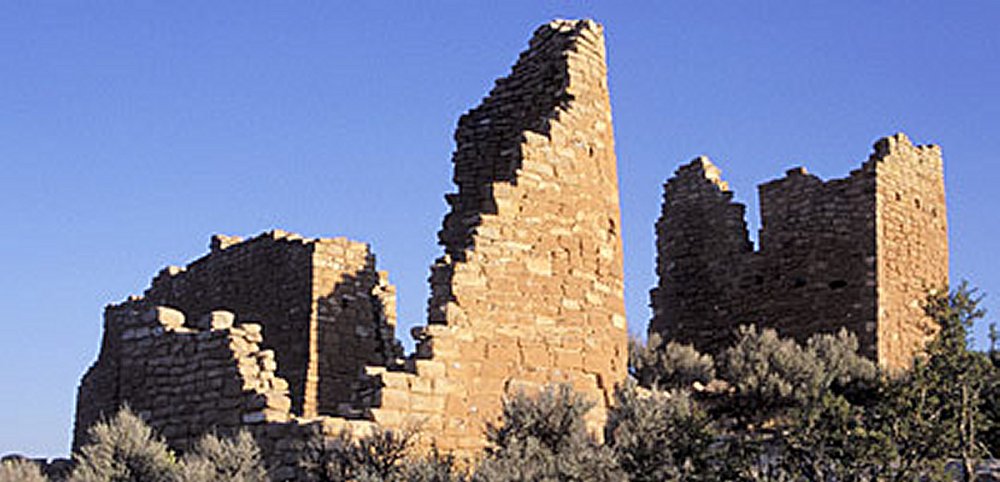Ancient Ruins Of Hovenweep: Impressive Puebloan Masonry
A. Sutherland - AncientPages.com - Hovenweep became a National Monument in 1923, but the site is a very ancient. "Hovenweep" is a Paiute/Ute word meaning "Deserted Valley". It is located along the border between southeast Utah and southwest Colorado, just north and west of Cortez, CO, at an altitude of 5,200 feet.
Humans lived there for more than 10,000 years. Nomadic Paleo-Indians visited the Cajon Mesa of the Great Sage Plain to hunt and gather food. They used the area for centuries, following the seasons.
Then, about 900 AD, the transitional period came and people started to settle at Hovenweep year-round, planting and harvesting crops in the rich soil of the mesa top. They were no longer a traditional hunter-gatherer society but the so-called pueblo people; these early Puebloan cultures settled in the area and remained until the 14th century.
The Ancestral Puebloans inhabited the Four Corners region of Colorado, Utah, New Mexico, and Arizona from about 500 A.D. to 1300 A.D.
By the late 1200s, the Hovenweep area was home to over 2,500 people, who prepared their land for cultivation by creating terraces, building check dams to retain topsoil and storage granaries to protect harvests of corn, beans and squash for later use.
These mysterious people were skillful builders; their masonry is impressive even today.
Most of the structures with a large variety of sizes and shapes were built at Hovenweep between A.D. 1200 and 1300. There are D-shaped dwellings, square and circular towers, and usually circular, ceremonial structures called kivas, which according to archaeologists were associated with the striking towers.
The mysterious Puebloan towers, on the other hand, could have been celestial observatories, defensive structures, storage facilities or civil buildings.

Towers such as the Square Tower are found throughout the canyon and were possibly used for water management, protection, and/or for ceremonial purposes. Courtesy of the National Park Service
It has also been suggested that the placement of these towers had to do with protection of water sources indispensable for the survival.
The most easily accessible part of the Hovenweep National Monument is the Square Tower Unit, which contains most of Ancestral Puebloan structures and among them, there is , for example, Hovenweep Castle, which has several rooms and D-shaped towers.
The slots and doors of Hovenweep Castle, in Square Tower Group, define a solar calendar device used by the builders to reckon the passage of the seasons, important these ancient people and their farming in the harsh climate of the Colorado Plateau.
By the end of the 13th century, the inhabitants of Hovenweep began to leave the area. Though the reason is unclear, ancestral Puebloans throughout the area migrated south to the Rio Grande Valley in New Mexico and the Little Colorado River Basin in Arizona. Today's Pueblo, Zuni and Hopi people are descendants of this culture.
The first historic reports of the abandoned structures at Hovenweep were made by W.D. Huntington, the leader of a Mormon expedition into southeast Utah in 1854.
The name "Hovenweep" was adopted by pioneer photographer William Henry Jackson in 1874. In 1917-18, J.W. Fewkes of the Smithsonian Institution surveyed the area and recommended the structures be protected.
Written by – A. Sutherland AncientPages.com Staff Writer
Copyright © AncientPages.com All rights reserved. This material may not be published, broadcast, rewritten or redistributed in whole or part without the express written permission of AncientPages.com
Expand for referencesMore From Ancient Pages
-
 Long-Lost Anglo-Saxon Monastery Ruled By Queen Cynethryth Of Mercia Discovered By Archaeologists
Archaeology | Aug 19, 2021
Long-Lost Anglo-Saxon Monastery Ruled By Queen Cynethryth Of Mercia Discovered By Archaeologists
Archaeology | Aug 19, 2021 -
 Spread Of Early Farming Across Atlantic Coast Of Europe – In New Light
Archaeology | Apr 27, 2020
Spread Of Early Farming Across Atlantic Coast Of Europe – In New Light
Archaeology | Apr 27, 2020 -
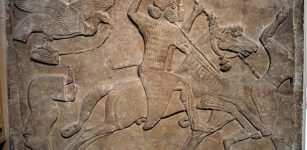 Invention Of Ancient Military Technologies Throughout World History Investigated
Archaeology | Oct 23, 2021
Invention Of Ancient Military Technologies Throughout World History Investigated
Archaeology | Oct 23, 2021 -
 10 Magnificent Ancient Libraries
Featured Stories | Feb 6, 2016
10 Magnificent Ancient Libraries
Featured Stories | Feb 6, 2016 -
 On This Day In History: Battle Of Durnstein Was Fought On The River Danube – On Nov 11, 1805
History | Nov 11, 2016
On This Day In History: Battle Of Durnstein Was Fought On The River Danube – On Nov 11, 1805
History | Nov 11, 2016 -
 Beautiful Legend Of Maneki-neko – The Japanese Good Luck Charm Cat Raising A Paw
Featured Stories | Oct 10, 2021
Beautiful Legend Of Maneki-neko – The Japanese Good Luck Charm Cat Raising A Paw
Featured Stories | Oct 10, 2021 -
 The Helm Of Awe – Powerful Viking Symbol For Physical, Mental And Spiritual Protection
Ancient Symbols | May 25, 2018
The Helm Of Awe – Powerful Viking Symbol For Physical, Mental And Spiritual Protection
Ancient Symbols | May 25, 2018 -
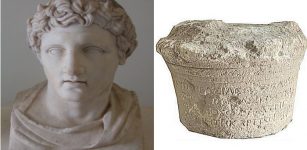 2,000-Year Old Engraved Kurdistan Tablet Referring To A Hellenistic Ruler Demetrius – Analyzed
Archaeology | Dec 14, 2020
2,000-Year Old Engraved Kurdistan Tablet Referring To A Hellenistic Ruler Demetrius – Analyzed
Archaeology | Dec 14, 2020 -
 Yenikapı Excavations Reveal 8,500-Year-Old Artifacts
Archaeology | Jan 10, 2016
Yenikapı Excavations Reveal 8,500-Year-Old Artifacts
Archaeology | Jan 10, 2016 -
 Ancient Liangzhu Culture Collapsed Due To Climate Change – New Study Says
Archaeology | Nov 25, 2021
Ancient Liangzhu Culture Collapsed Due To Climate Change – New Study Says
Archaeology | Nov 25, 2021 -
 Intriguing Ket People – The Last Nomadic Hunter-Gatherers Of Siberia
Featured Stories | Nov 23, 2023
Intriguing Ket People – The Last Nomadic Hunter-Gatherers Of Siberia
Featured Stories | Nov 23, 2023 -
 Hundreds Of Fascinating 24,000-Year-Old Cave Paintings Discovered In Eastern Iberia
Archaeology | Sep 11, 2023
Hundreds Of Fascinating 24,000-Year-Old Cave Paintings Discovered In Eastern Iberia
Archaeology | Sep 11, 2023 -
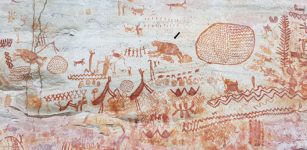 Puzzling Extinct Giants Depicted On 12,000-Year-Old Rock Paintings In The Colombian Amazon Rainforest Baffle Scientists
Archaeology | Mar 12, 2022
Puzzling Extinct Giants Depicted On 12,000-Year-Old Rock Paintings In The Colombian Amazon Rainforest Baffle Scientists
Archaeology | Mar 12, 2022 -
 Ancient Egyptian Blue Used To Create New Nanomaterial 100,000 Times Thinner Than A Human Hair
Ancient Technology | Mar 24, 2020
Ancient Egyptian Blue Used To Create New Nanomaterial 100,000 Times Thinner Than A Human Hair
Ancient Technology | Mar 24, 2020 -
 Mystery Of The 1,700-Year-Old ‘Salt’ Mummy With Long White Hair
Featured Stories | Sep 14, 2016
Mystery Of The 1,700-Year-Old ‘Salt’ Mummy With Long White Hair
Featured Stories | Sep 14, 2016 -
 Exploring Ancient Secrets Of An Ancestral Maya Neighborhood And Some Puzzling Buildings
Archaeology | Sep 10, 2022
Exploring Ancient Secrets Of An Ancestral Maya Neighborhood And Some Puzzling Buildings
Archaeology | Sep 10, 2022 -
 Missing Pieces Of The Magnificent Golden Tree Of Lucignano Discovered
Archaeology | Nov 6, 2023
Missing Pieces Of The Magnificent Golden Tree Of Lucignano Discovered
Archaeology | Nov 6, 2023 -
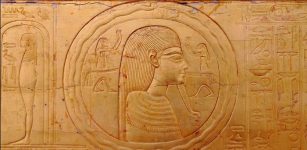 Ouroboros: Ancient Infinity Symbol Used By Different Ancient Civilizations
Ancient Symbols | Oct 3, 2017
Ouroboros: Ancient Infinity Symbol Used By Different Ancient Civilizations
Ancient Symbols | Oct 3, 2017 -
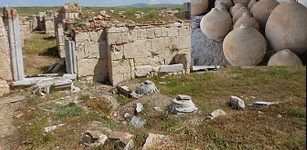 Byzantine Granary With 11 Pithoi Found In Byzantine City Of Amorium In Central Turkey
Archaeology | Aug 5, 2020
Byzantine Granary With 11 Pithoi Found In Byzantine City Of Amorium In Central Turkey
Archaeology | Aug 5, 2020 -
 God Ptah ‘Lord Of Memphis’ Was Among The Most Revered Creator Gods Of Ancient Egypt
Egyptian Mythology | Apr 17, 2018
God Ptah ‘Lord Of Memphis’ Was Among The Most Revered Creator Gods Of Ancient Egypt
Egyptian Mythology | Apr 17, 2018



